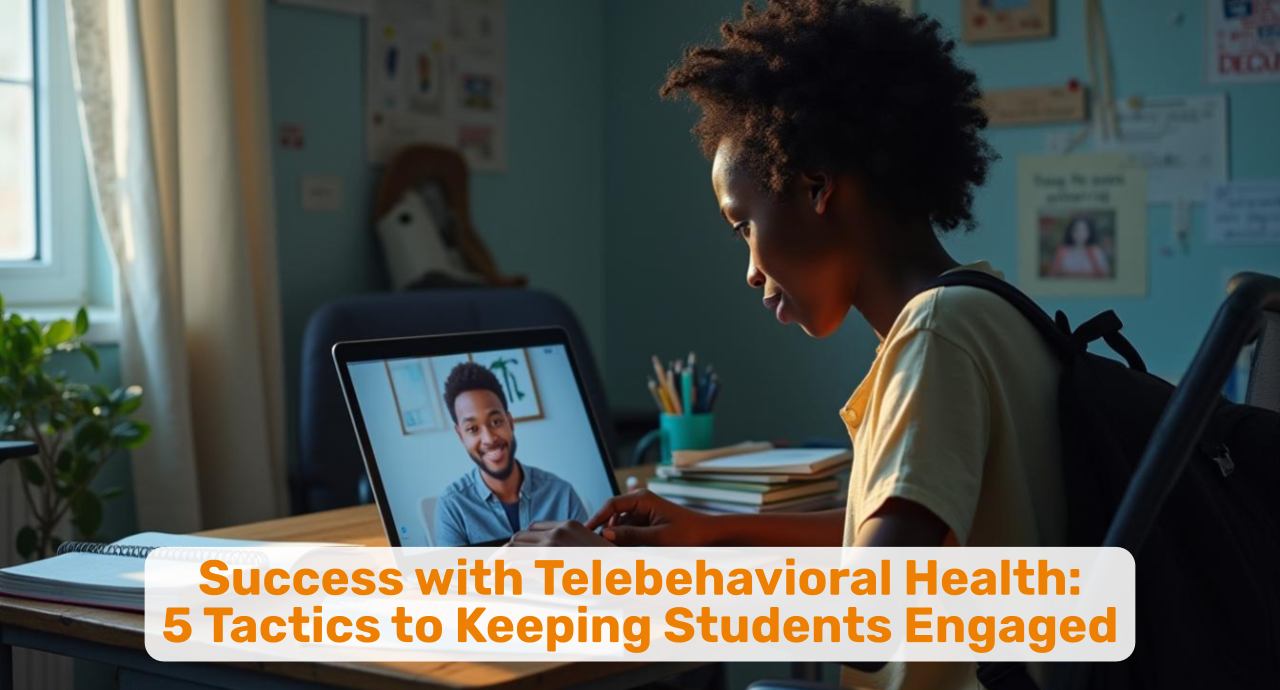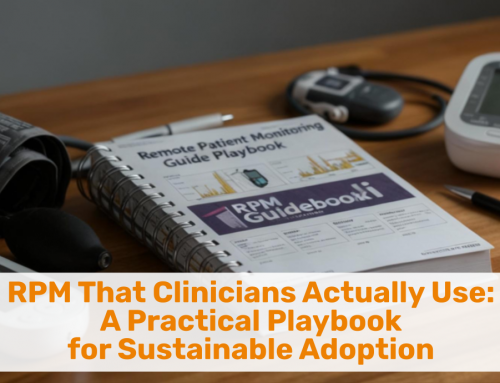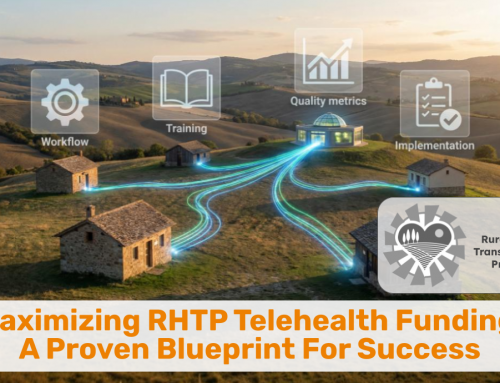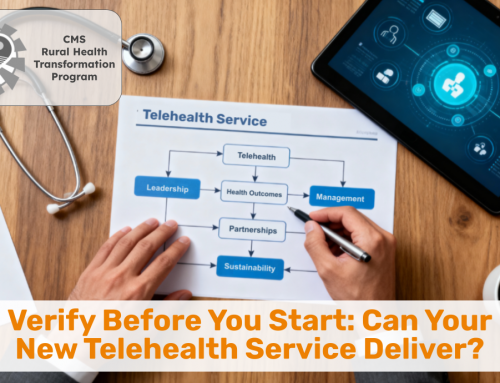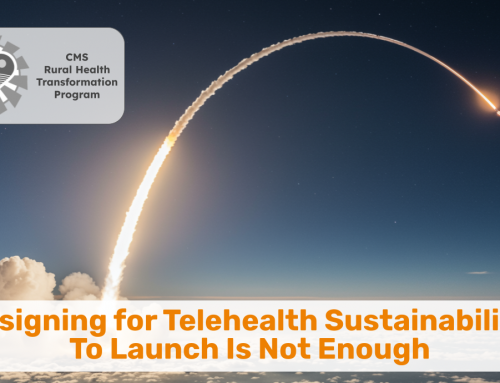Delivering behavioral health services to teenagers has never been simple — but it’s especially complex when the connection is virtual and the setting is a school or the home.
Unlike traditional therapy spaces that are often thoughtfully decorated to create a welcoming, calming space, the school-based telebehavioral health environment introduces a unique set of logistical and treatment challenges.
Distractions are everywhere. Privacy can be scarce or in question. And let’s face it — teenagers don’t always jump at the chance to open up, especially over a screen.
Yet the need for accessible adolescent behavioral health support is undeniable. The U.S. Surgeon General has declared youth mental health a national priority, and many school systems are answering the call by partnering with virtual behavioral health providers or embracing telehealth themselves.
But implementation alone isn’t enough. Engagement is everything.
So how can clinicians build meaningful, therapeutic connections with teens in a virtual environment?
Here are five tactics that can make a difference.
Tactic 1 – Set the Stage with a Pre-Session Ping
Teenagers are not always known for their punctuality or calendar management skills. A simple text or call 5–10 minutes before the session can serve multiple purposes: it confirms the student is available, creates a sense of accountability, and offers a familiar touchpoint a few minutes before diving into deeper conversation.
This kind of advance outreach can also help mitigate technical barriers. If the student’s Wi-Fi is spotty or the school device isn’t cooperating, the clinician can pivot early and avoid wasting valuable session time troubleshooting. Just as importantly, it signals to the student that the provider is present, attentive, and invested — even before the camera even turns on.
Tactic 2 – Cameras On, Pressure Off
Yes, having the camera on is crucial. A visual connection enables better rapport, ensures basic verification, and fosters a sense of human connection. But for adolescents, being on camera can feel exposed or even performative. That’s why a compromise approach works best.
Start by encouraging camera use at the beginning of the session. Make eye contact. Confirm it’s really them. Then — if they’re using a phone and feeling apprehensive — give them permission to place the device on the table while still staying connected. While they may be able to see you, they are themselves out of the picture range.
This small gesture can go a long way in building trust. It respects their comfort level without compromising the clinician’s ability to engage meaningfully.
The goal isn’t rigid compliance — it’s authentic connection.
Tactic 3 – Make Room for a Little Play
While I’m no clinician, I do know that for engaging especially younger students play is an important component of therapy. By inviting a student, as directed by the clinician, to play a simple online game or solve an easy puzzle during the session can actually deepen engagement. When teens are in a familiar, playful headspace, they often let their guard down — and the therapeutic conversation flows more naturally.
This doesn’t mean turning sessions into full-on gaming hours. Instead, think of games as a regulated outlet — something like a digital fidget spinner. Whether it’s a quick matching puzzle, a calming visual activity, or a therapist-directed game shared via chat link, these moments of play can be surprisingly productive.
For students who are fidgety, anxious, or overwhelmed, structured play offers a break from intensity without losing the connection.



Tactic 4 – Use Visual Mood Check-Ins
Many teens struggle to articulate how they’re feeling—but that doesn’t mean they’re not feeling deeply. By providing the student with different options to indicate agreement, disagreement or emotions, clinicians can lower the barrier to emotional expression.
Some video visit tools have built-in “emojis” and “gestures” that you could try. Or you could show students how to use the chat function to comment via Emojis.
Try asking the student to pick an emoji that matches their current mood. Or show a simple color wheel and ask, “Which color feels like you today?”
These check-ins don’t just set the tone — they offer rich clinical insight. They also help students reflect on their internal state without the pressure of verbal precision. Over time, patterns emerge, and students may begin to describe their emotional landscape more confidently.
Visual tools provide a low-pressure on-ramp to deeper discussion.
Tactic 5 – Let Teens Steer (At Least a Little)
As many good clinicians know, one of the most powerful things a clinician can do is relinquish some control. Giving teens a chance to shape the session — at least in part — signals respect for their autonomy and fosters buy-in.
Start with an open-ended prompt: “What’s something you want to talk about today?” “What’s been on your mind?” “Do you want to check in, vent, or just chill for a bit?”
While this is not unique to virtual visit, it is a proven approach that invites them into the therapeutic process as active participants, not passive recipients. It shifts the dynamic from “appointment” to “conversation.” And for adolescents—who are developmentally wired to seek agency and independence—that shift can be transformative.
A Matter of Trust, Not Tricks
Each of these tactics is grounded in a simple truth: as humans, we want to be seen, heard, and respected. The students may not say it outright. They may roll their eyes or retreat into one-word answers. But when clinicians take the time to build a safe, flexible, and student-centered virtual space, engagement tends to follow.
It’s not about gimmicks or hacks — it’s about showing up, staying curious, and making room for the complexities of their lives.
Actionable Recommendations – Bringing It to Life
For telebehavioral health programs operating in schools, supporting clinicians with these kinds of engagement strategies can dramatically improve outcomes.
Here’s how program leaders can operationalize it:
-
Train clinicians in youth-specific engagement techniques — particularly in the use of features unique to your video visit solution.
-
Develop pre-session communication workflows, including text reminders or front-office coordination with school staff (or parents)
-
Create a curated library of low-stimulation games, mood check-in visuals, and agenda-setting prompts.
-
Normalize flexibility and personalization as part of your program’s care philosophy.
-
Gather feedback from teens themselves — what keeps them engaged? What turns them off?
Every student is different. But with a little intention, creativity, and compassion, virtual care can become a lifeline for the teens who need it most.
Closing Thought – A Shared Commitment
As we continue to enhance access to behavioral health in schools through telehealth, let’s remember that patient (or “client”) engagement isn’t just a hurdle to clear — it’s the foundation of healing.
Clinicians don’t need to be tech wizards or teen whisperers (though the latter skill would help). They just need the right tools, the right mindset, and the support of a system that values connection as much as clinical skill.
Because when teens feel truly seen — even through a screen — they’re far more likely to lean in, open up, and begin the work of growing.
Are you interested in exploring how your school-based health center can improve continuity of care through telehealth? Then reach out for a complimentary conversations and I’d be happy to share what we’ve learned and where to get help.








To receive articles like these in your Inbox every week, you can subscribe to Christian’s Telehealth Tuesday Newsletter.
Christian Milaster and his team optimize Telehealth Services for health systems and physician practices. Christian is the Founder and President of Ingenium Digital Health Advisors where he and his expert consortium partner with healthcare leaders to enable the delivery of extraordinary care.
Contact Christian by phone or text at 657-464-3648, via email, or video chat.

